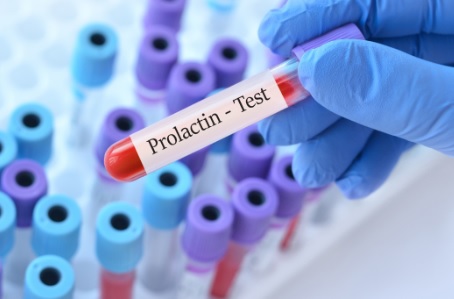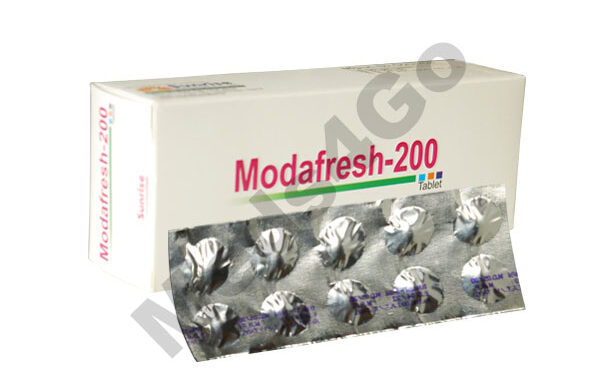What are the Main Uses of Cabergoline?

Introduction to Cabergoline
Cabergoline is a potent medication primarily known for its ability to inhibit the secretion of prolactin, a hormone produced by the pituitary gland. This pharmaceutical is a dopamine agonist, meaning it mimics the action of dopamine, a crucial neurotransmitter in the brain. Cabergoline’s effectiveness in managing various medical conditions has made it a valuable tool in modern medicine.
Cabergoline in the Treatment of Hyperprolactinemia
Understanding Hyperprolactinemia
Hyperprolactinemia is a condition characterized by abnormally high levels of prolactin in the blood. Elevated prolactin levels can lead to several symptoms, including irregular menstrual cycles, infertility, and galactorrhea (unexpected milk production). In men, it can result in decreased libido, erectile dysfunction, and infertility.
Mechanism of Action
Cabergoline works by stimulating dopamine receptors in the pituitary gland, which in turn reduces the production and release of prolactin. This action helps normalize prolactin levels in individuals with hyperprolactinemia, alleviating the associated symptoms and restoring normal physiological functions.
Clinical Efficacy
Numerous clinical studies have demonstrated the efficacy of cabergoline in treating hyperprolactinemia. Patients receiving cabergoline therapy often experience a significant reduction in prolactin levels, leading to the resolution of symptoms such as menstrual irregularities and infertility. Cabergoline is preferred over other treatments due to its longer half-life, which allows for less frequent dosing.
Cabergoline for Parkinson’s Disease
Role in Parkinson’s Disease Management
Parkinson’s disease is a neurodegenerative disorder characterized by the progressive loss of dopamine-producing neurons in the brain. This leads to motor symptoms such as tremors, rigidity, bradykinesia (slowness of movement), and postural instability.
Dopamine Agonist Action
As a dopamine agonist, cabergoline can help manage the symptoms of Parkinson’s disease by supplementing the diminished dopamine levels in the brain. This action improves motor control and reduces the severity of symptoms.
Cabgolin 0.25mg is a kind of dopamine agonist. Treatment for elevated prolactin levels involves its use. In situations of stillbirth, abortion, or miscarriage, it is also useful in halting the production of breast milk.
Adjunct Therapy
Cabergoline is often used as an adjunct therapy in Parkinson’s disease. It is typically prescribed in combination with other medications, such as levodopa, to enhance overall treatment efficacy. The use of cabergoline can help reduce the dosage requirements of other medications, thereby minimizing potential side effects.
Cabergoline in the Treatment of Pituitary Adenomas
Understanding Pituitary Adenomas
Pituitary adenomas are benign tumors of the pituitary gland that can secrete excessive amounts of hormones, including prolactin. These tumors can cause a range of symptoms depending on the type of hormone they overproduce.
Therapeutic Role of Cabergoline
Cabergoline is highly effective in treating prolactin-secreting pituitary adenomas (prolactinomas). By reducing prolactin levels, cabergoline can shrink the size of these tumors and alleviate the associated symptoms. In some cases, cabergoline therapy can even result in the complete resolution of the tumor.
Long-term Management
For patients with pituitary adenomas, long-term cabergoline therapy is often required. Regular monitoring of prolactin levels and periodic imaging studies are necessary to assess the response to treatment and adjust dosages accordingly.
Cabergoline for Restless Legs Syndrome (RLS)
Overview of Restless Legs Syndrome
Restless legs syndrome is a neurological disorder characterized by an irresistible urge to move the legs, often accompanied by uncomfortable sensations. These symptoms typically worsen during periods of inactivity and at night, leading to sleep disturbances and reduced quality of life.
Effectiveness of Cabergoline
Cabergoline has shown promise in the treatment of RLS due to its dopaminergic effects. By activating dopamine receptors, cabergoline can alleviate the urge to move the legs and reduce associated discomfort. This leads to improved sleep quality and overall well-being for individuals with RLS.
Clinical Evidence
Several studies have reported positive outcomes with cabergoline therapy in RLS patients. The medication’s ability to provide sustained relief with once-daily dosing makes it a convenient option for long-term management of this condition.
Other Potential Uses of Cabergoline
Management of Acromegaly
Acromegaly is a condition caused by excessive growth hormone production, leading to abnormal growth of bones and tissues. Cabergoline can be used as an adjunct therapy in acromegaly to reduce growth hormone levels, particularly in patients who have not responded adequately to surgery or other treatments.
Improving Outcomes in IVF
Cabergoline has been investigated for its potential to improve outcomes in in vitro fertilization (IVF). By lowering prolactin levels, cabergoline can enhance the ovarian response to stimulation, increasing the chances of successful fertilization and pregnancy.
Cabergoline 0.5mg is used to treat a variety of illnesses that arise from excessive production of the hormone prolactin. It can be used to treat pituitary prolactinomas, which are tumors of the pituitary gland, as well as some menstruation issues and issues with fertility in both sexes.
Psychiatric Applications
There is emerging evidence suggesting that cabergoline may have potential benefits in certain psychiatric conditions, such as bipolar disorder and depression. Its dopaminergic activity could play a role in modulating mood and affective symptoms.
Safety and Side Effects
Common Side Effects
While cabergoline is generally well-tolerated, some patients may experience side effects. Common side effects include nausea, dizziness, headache, and fatigue. These symptoms are usually mild and tend to diminish with continued use.
Serious Side Effects
In rare cases, cabergoline can cause more serious side effects, such as heart valve issues, pulmonary fibrosis, and psychiatric disturbances. Patients receiving cabergoline therapy should undergo regular medical evaluations to monitor for these potential complications.
Contraindications and Precautions
Cabergoline is contraindicated in individuals with a history of cardiac valvulopathy or fibrotic disorders. It should be used with caution in patients with cardiovascular disease or psychiatric conditions. A thorough medical assessment is essential before initiating cabergoline therapy.
Conclusion
Cabergoline is a versatile medication with multiple therapeutic applications. Its ability to reduce prolactin levels makes it invaluable in the treatment of hyperprolactinemia, pituitary adenomas, and certain reproductive issues. Additionally, its dopaminergic effects offer benefits in managing Parkinson’s disease and restless legs syndrome. While generally safe, it is important to monitor for potential side effects and contraindications. Cabergoline’s broad range of uses highlights its significance in modern medical practice.

 Smile Brighter: Meet Canberra’s Top Dental Hygienists
Smile Brighter: Meet Canberra’s Top Dental Hygienists  Transform Your Comfort: Discover the Benefits of Cushions Lab Seat Cushions and Pillows
Transform Your Comfort: Discover the Benefits of Cushions Lab Seat Cushions and Pillows  Enhance Your Mental Clarity with Modafresh 200
Enhance Your Mental Clarity with Modafresh 200  List of Top 10 Neurologists in India 2024
List of Top 10 Neurologists in India 2024  Body Care Products Manufacturers: Providing Quality Products for Your Skincare Needs
Body Care Products Manufacturers: Providing Quality Products for Your Skincare Needs  The Journey to the Best Microblading in Dubai: A Client’s Perspective
The Journey to the Best Microblading in Dubai: A Client’s Perspective  Exploring London’s Best Butcher Shops
Exploring London’s Best Butcher Shops  Enhance Your Shop Appeal with Sydney’s Best Carpentry Services
Enhance Your Shop Appeal with Sydney’s Best Carpentry Services  A Detailed Look at the Features of the LEGO Technic Mars Crew Exploration Rover
A Detailed Look at the Features of the LEGO Technic Mars Crew Exploration Rover